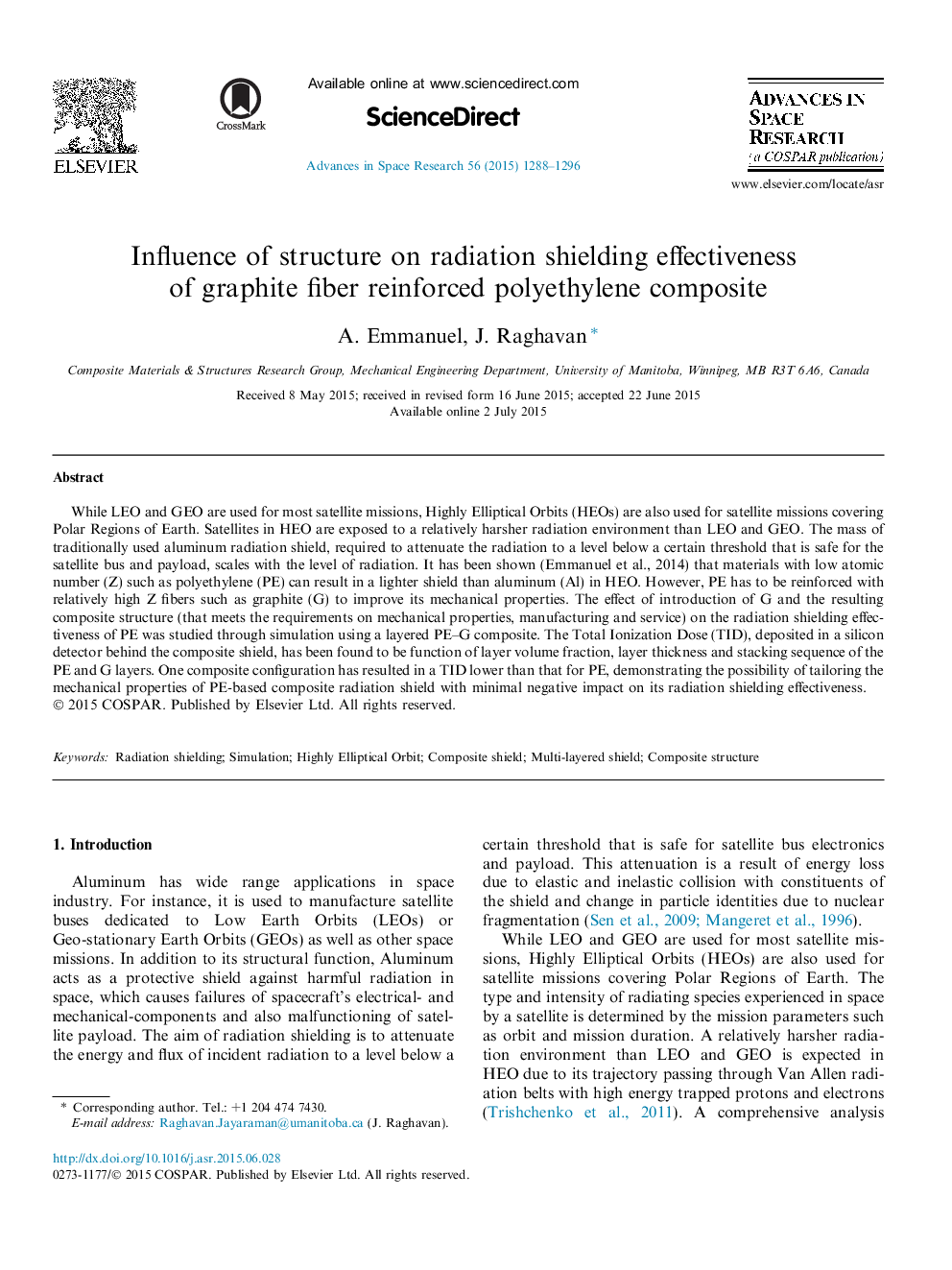| کد مقاله | کد نشریه | سال انتشار | مقاله انگلیسی | نسخه تمام متن |
|---|---|---|---|---|
| 1763729 | 1020021 | 2015 | 9 صفحه PDF | دانلود رایگان |
While LEO and GEO are used for most satellite missions, Highly Elliptical Orbits (HEOs) are also used for satellite missions covering Polar Regions of Earth. Satellites in HEO are exposed to a relatively harsher radiation environment than LEO and GEO. The mass of traditionally used aluminum radiation shield, required to attenuate the radiation to a level below a certain threshold that is safe for the satellite bus and payload, scales with the level of radiation. It has been shown (Emmanuel et al., 2014) that materials with low atomic number (Z) such as polyethylene (PE) can result in a lighter shield than aluminum (Al) in HEO. However, PE has to be reinforced with relatively high Z fibers such as graphite (G) to improve its mechanical properties. The effect of introduction of G and the resulting composite structure (that meets the requirements on mechanical properties, manufacturing and service) on the radiation shielding effectiveness of PE was studied through simulation using a layered PE–G composite. The Total Ionization Dose (TID), deposited in a silicon detector behind the composite shield, has been found to be function of layer volume fraction, layer thickness and stacking sequence of the PE and G layers. One composite configuration has resulted in a TID lower than that for PE, demonstrating the possibility of tailoring the mechanical properties of PE-based composite radiation shield with minimal negative impact on its radiation shielding effectiveness.
Journal: Advances in Space Research - Volume 56, Issue 7, 1 October 2015, Pages 1288–1296
